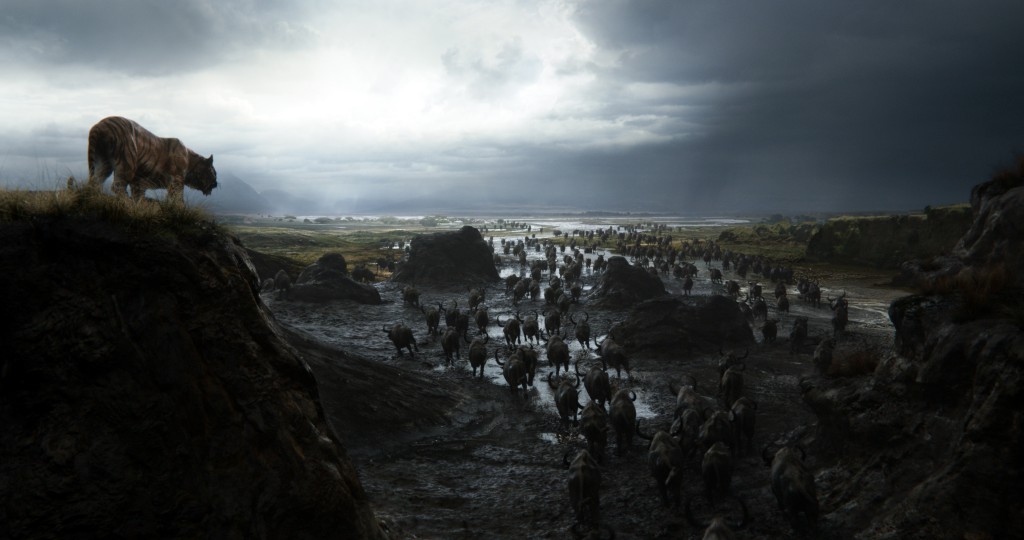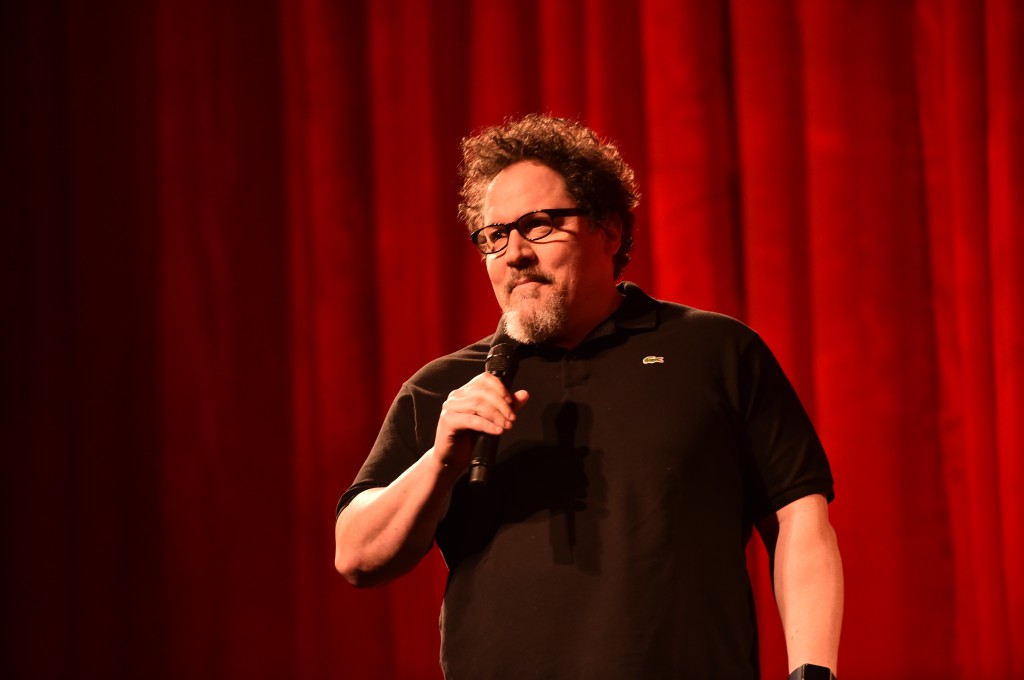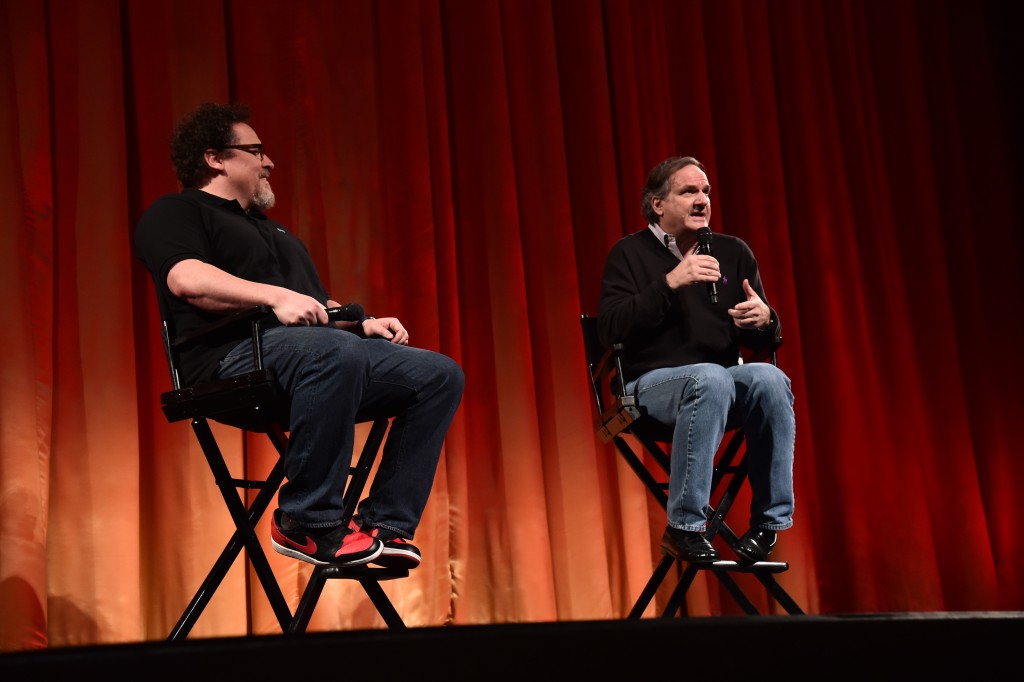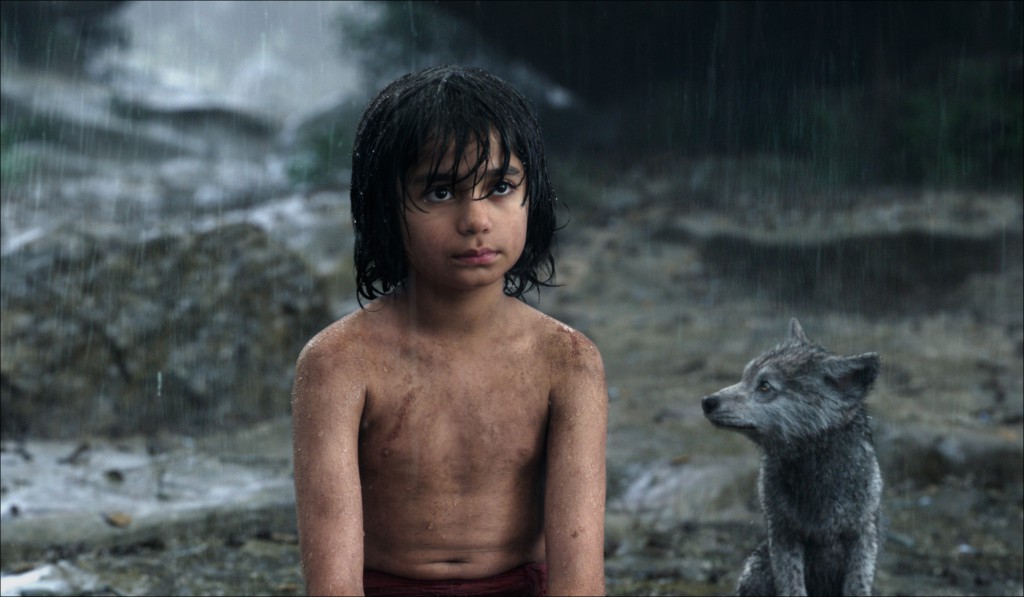I am a lucky guy. Through my life with Disney, I have been able to cross off virtually every item on my Disney bucket list. But, while I have been to Walt’s apartment and the Cinderella Castle Suite, my favorite parts of my Disney life is when something catches me by surprise.
By far most of my Disney highlights are when I discover that someone who is celebrated as a master of their own craft has their a love of Disney as well. I loved hearing Dick Cook telling stories of being a monorail operator at Disneyland or seeing Tom Hiddleston give an impromptu rendition of “The Bare Necessities” at the D23 Expo as he espoused what Disney means to him. Seeing these titans share their own deeply personal connection to the company are truly magical moments. Not too long ago I was honored to be able to be a part of another one of those special moments.
Recently, Disney hosted a low-key presentation for their upcoming adaptation of The Jungle Book at the El Capitan Theatre. The point was to have director Jon Favreau and Visual Effects Supervisor Rob Legato discuss the groundbreaking visual effects that are in every shot of this film. But, before we got there, Jon Favreau took to the stage to discuss the film and how it is inspired by the life and legacy of Walt Disney. I don’t just mean that this film has elements inspired by the 1967 animated classic — it goes beyond that. The sources of inspiration run the gamut from Walt’s Alice Comedies to the last feature Walt supervised. The team looked at the work of the Nine Old Men, “The Big Five” (Snow White, Pinocchio, Fantasia, Dumbo, Bambi), as well as 1967’s The Jungle Book. They saw how Walt’s team had animals act in Bambi, how they added a live-action character in an animated world in the Alice Comedies, and how they balanced action, emotion, and humor in their entire library of work.
Whenever someone remakes or retells a classic Disney story, the director always comes out and says how inspired they were by the original Disney classic. Of course they do, they have to. But what impressed me about Favreau was he pointed to the ways that the Disney legacy guided the production. He knows his stuff. He is not the kind of celebrity that bought a Mickey Mouse shirt and took a publicity still at Disneyland. He is a John Stamos/Robin Lopez level of Disney fan. One that we could chat about the Museum of the Weird or Big Rock Candy Mountain and wouldn’t give us an odd look. Because Favreau loves Disney as everyone who reads LaughingPlace loves Disney, this upcoming version of The Jungle Book was a true labor of love.
Of course, one of Walt’s greatest legacies was using technology to tell stories. As Favreau says, “When I think about Disney’s legacy, I relate to Walt’s original dream. Walt Disney’s work has influenced my work. He was considered high-tech for the time. He was the first person who locked soundtrack with picture, so the characters were perfectly choreographed to the musical score — something that absolutely blew people’s minds. Disney was on the cutting edge of technology.” Just as Walt was on the cutting edge, so is Mr. Favreau.
We have been calling this film the “upcoming live-action adaptation,” but as it turns out, that is not really accurate. The only live-action element is Neel Sethi who portrays Mowgli. His performance is then combined with photo-real animation and top-notch motion capture techniques. They did extensive research into footage of real animals and nature settings as well as what worked and didn’t work in other talking animal pictures. The results are a true visual feast for the eyes. The beauty is realistic yet completely unreal. They have made nature even more spectacular and magnificent.
As Favreau says, “If you want believability, the physics must be real. Mowgli and the designs are executed in a real way, but we took a tremendous amount of liberty when we made the jungle. Not unlike Disneyland, we realized that we could make the animals a little bigger than life to help accentuate how vulnerable this little boy feels in the jungle. Every corner of the screen is filled with tremendous detail. We have this beautiful, lush jungle canopy and you have the art direction and the cinematography that’s evocative of the old multi-plane camerawork from the animated films.”
You may have caught a glimpse of this visually stunning world during the recent Super Bowl commercial or one of the trailers, but we were able to see some scenes in their non-final form in Dolby Vision Laser projection. The crispness and dynamic colors lived up to the hype. While this technology will be in just a few theaters, it is definitely worth the effort to try and find one. Disney fans living in or visiting Southern California can experience it at the El Capitan Theatre. But even if you need to see it in whatever format your local theater provides, there is no doubt that it will be worthy of a trip to see this on the big screen. The Jungle Book is a cinematic event.
Visual Effects Supervisor Rob Legato has an impressive pedigree working on visual masterpieces such as Apollo 13, Titanic, Avatar, and, Hugo. His team pushed the limits of technology to bring us something we have never seen before. While Avatar took place on a foreign world, this film had to bring to life the world we are familiar with. “The audience will feel the grandeur of the Indian jungle,” says Legato. “They’ll experience this exotic land. That’s part of the fun of going to the movies—seeing a place you’ve never seen before. Living it. Walking through it.”
Of course, just as in Walt’s time, this impressive technology only matters if it is servicing a fantastic story. The team will be bringing us a story that will be at the same time different and familiar. But I presume, that they just didn’t take their technological inspiration from Walt, but that they also inspired by his storytelling skills. And when it comes to storytellers, you can’t do much better than Walt.




